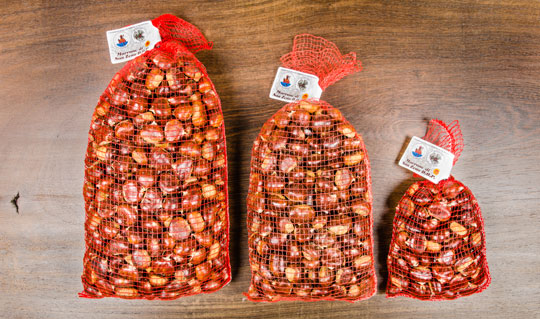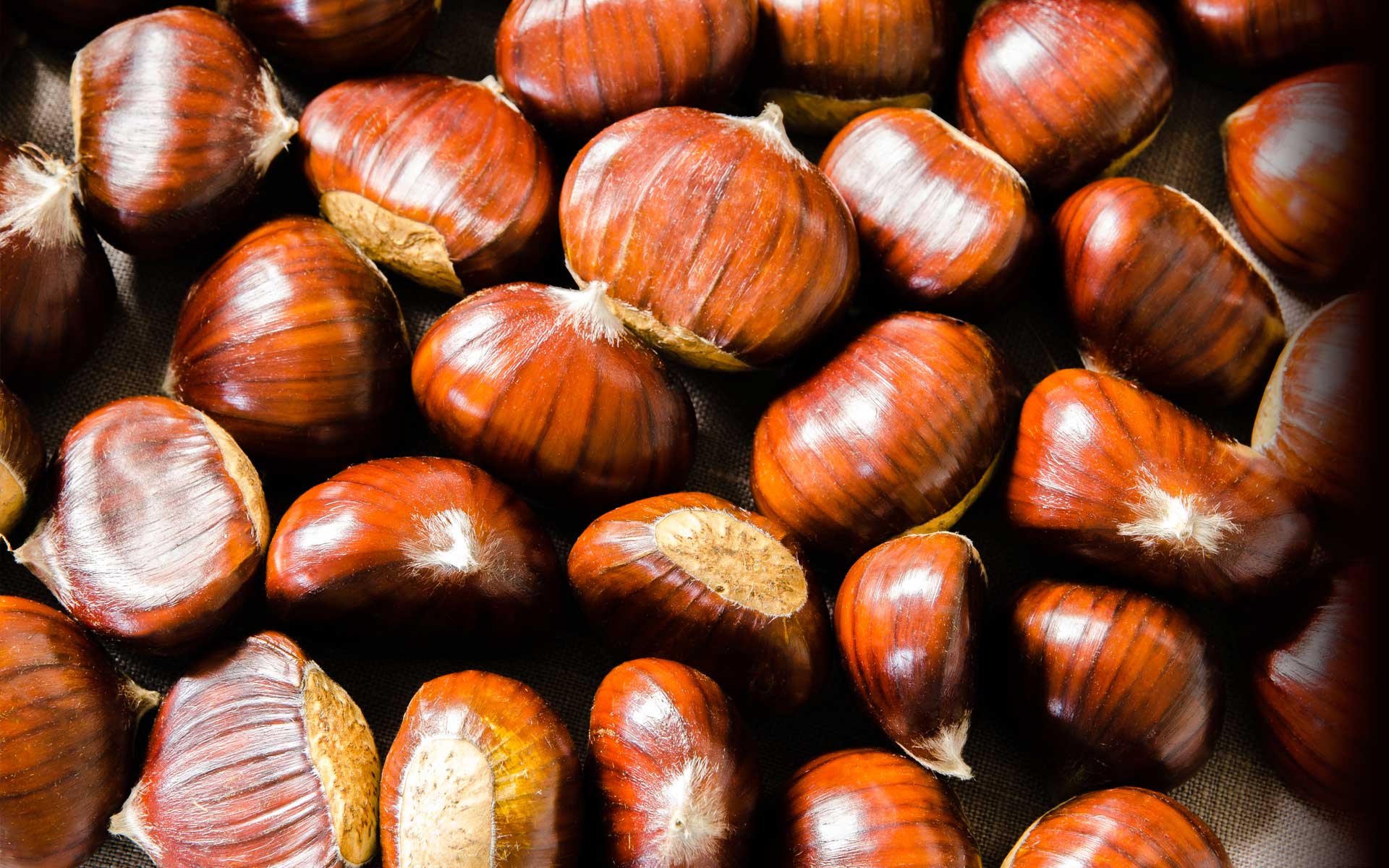| |
Product characterist ics and production methods The Protected Designation of Origin of the Marron of San Zeno refers to the Castanea Sativa Mills type, which belongs to the variety of the "marron". The fruits must have the following characteristics:
• number of fruits per bur, not more than 3;
• variable size, but with a number of fruits per kilo of not more than 120 and not less than 50;
• ellipsoidal shape, with mildly raised apex, lateral faces prevalently convex, but characterized by a different degree of convexity, hilar scar similar to a squashed circle tending towards a rectangle that does not extend to the lateral faces, of a lighter color to that of the pericarp;
• pericarp is thin, shiny, of a light brown color with darker streaks, highlighted in the middle;
• episperm (pellicle) is fine and slightly penetrating in the seed, and peels off easily;
• seed is of a pale yellow color, slightly corrugated, pasty and sweet in flavor.
These fruits, when consumed, as well as having the above characteristics in shape and appearance, must be whole, healthy, clean and dry. The types of cultivation, in respect of the environment, must be associated with adequate planting methods and pruning systems, in order not to modify the particular characteristics of the Marron of San Zeno P.D.O. Use of synthetic products and forcing are absolutely forbidden so as to safeguard the naturalness of the production. The number of plants in production per hectare may vary from a minimum of 30 to a maximum of 120. The fruits are harvested exclusively in the autumn period and this can be done by hand or by means of suitable mechanical means that safeguard the integrity of the plant and of the fruits. The maximum yield is established at 30kg of fruit per tree and in 3.6t per hectare. The harvested fruits undergo cure treatments according to traditional methods, such as the "novena" and the "rissara". The first consists in soaking the marrons in cold water for 9 days changing part of or all the water every 2 days, without adding any additives. The "rissara" instead, an age long tradition in these mountains, consists in accumulating the fruits and burs out in the open for 8-15 days. In both cases the objective is to favor a natural fermentation to open the fruit and preserve it from fungi, molds and parasites. The product is placed fresh in sealed packs to prevent fruit extraction.

|
|
|

